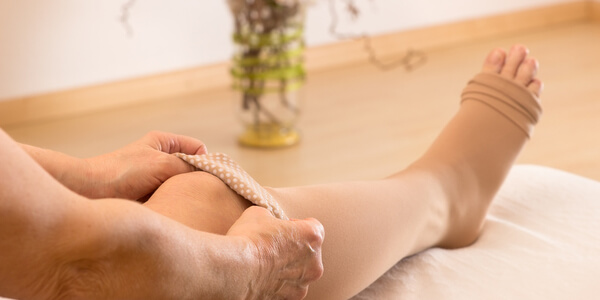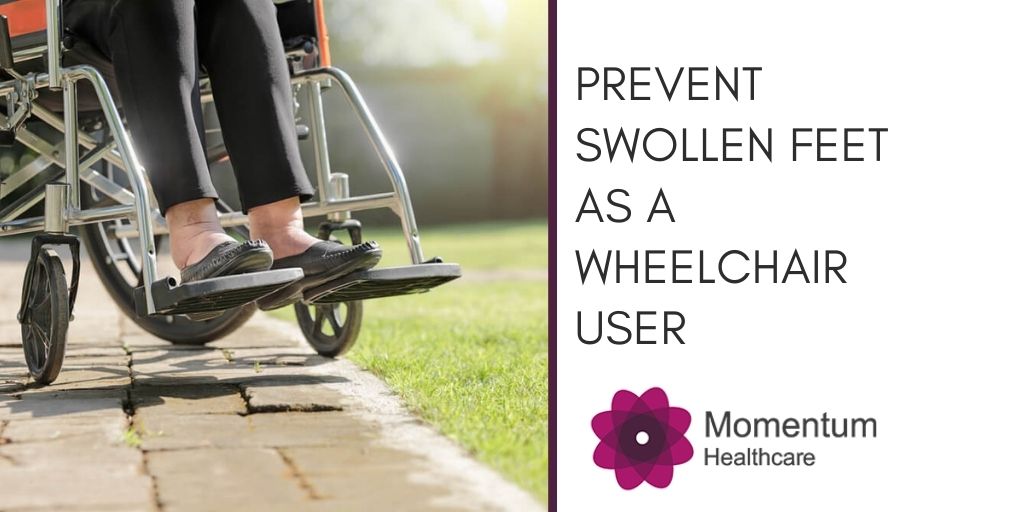Swollen feet and legs (medically known as oedema) is a common complaint in those that use wheelchairs, the elderly, and those who have little to no mobility or are overweight.
Swollen feet is most commonly caused by a build-up of fluid and is also a common complaint in pregnant women, people with kidney failure, wheelchair users and many other people, including those that stand for long periods.
Sitting down for too long can significantly increase the risk of swollen legs and feet, which is why wearing compression stockings, elevating the leg and other measures can help prevent this.
Here is our guide on how to prevent swollen feet if you are a wheelchair user.
Causes of swollen feet and ankles
Swelling in the feet and ankles most commonly occurs for the following reasons:
Fluid retention
Excess fluid in the lower body is the main contributing factor to swelling in the feet and ankles. Water retention can be caused by a variety of things including certain medications, lymphedema (obstruction of the lymphatic system), or a combination of injury and infections.
Restricted blood flow
Restricted blood flow to the lower body is another common cause of swelling in the feet and ankles. When the veins are unable to pump blood adequately, blood can pool in the legs which lead to swelling in the lower body.
Sitting for long periods
When the muscles are inactive for long periods, they can’t pump body fluids back up towards the heart. This retention of fluid and blood is what leads to excessive swelling in the legs.
What are the symptoms?
Signs that point to wheelchair users having developed oedema of the legs are:
- Swollen, puffy and tight skin
- Dimpling of the leg or foot area following pressure
- Mobility becomes more reduced in the legs
- Trouble walking or moving the feet and ankles
Symptoms depend on the underlying cause, but swelling, tightness, and pain are common.

How to reduce swelling in the lower legs
The good thing is that swelling in wheelchair users can easily be treated, either through exercises, lifestyle changes or by increasing the amount of blood flow to the affected area.
Increase circulation
Poor circulation and swelling of the legs are often linked to a blockage of the arteries or legs, so it’s important to increase circulation to prevent swelling from poor blood flow. You can do this by; moving your ankles in circles when sat down, following a balanced and healthy diet, wearing compression socks or elevating the legs.
Wear compression stockings
Compression socks are great for anyone that spends a long amount of time sitting down in a wheelchair as they help to increase the blood flow to the lower body. This increase in pressure can reduce pain and swell in the legs and ankle, as they allow your blood vessels to pump oxygen-rich blood around the body more freely.
The great thing about compression socks is that they are available in a variety of fits, strengths and colours, so it allows you to work with your doctor, or healthcare professional to get the right ones for you.
Elevate the foot
One of the easiest ways to help reduce the effects of swollen feet is to elevate your foot so that it sits higher than your heart. Leg rests are an ideal way for users to comfortably position their legs to a high level, allowing them to relieve the effects of swollen ankles and swollen feet.
With leg problems, it’s important to keep the legs elevated while seated or reclining, so that excess fluid doesn’t collect around the site of the swelling. Fortunately, many of us like to sit and relax for two or three hours in the evenings, so this makes for the perfect time to elevate the feet and relieve the pains associated with oedema.
Reduce your salt intake
Reducing your salt intake is an easy way to reduce the amount of excess water in the body. If you suffer from oedema, eating less salt will enable you to manage it better and improve the pain associated with swollen legs.


